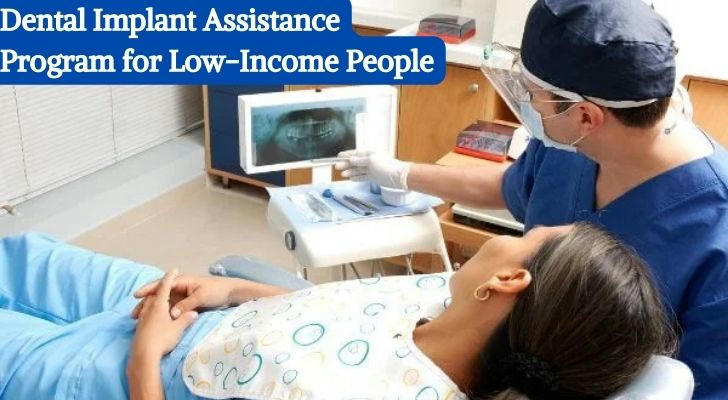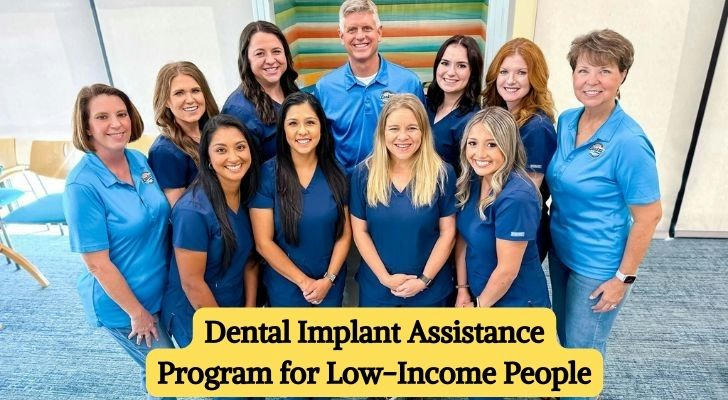🦷 What you need to know about dental implants
How Low-Income Seniors in the U.S. Can Access Dental Implant Assistance
In the U.S., low-income individuals often feel helpless when facing oral health issues due to the high cost of dental treatments. Many low-income families or individuals are unable to afford dental care, especially complex treatments like dental implants, which leads to worsening oral health problems. However, to alleviate this issue, several funding programs have been established to specifically assist disadvantaged groups who cannot afford dental expenses. Through these programs, low-income individuals can access necessary dental care, especially dental implants, helping them restore oral health and improve their quality of life.

1. Ways for Low-Income Individuals in the U.S. to Find Dental Implant Assistance Programs
Here are some major programs and organizations that provide dental implant assistance:
1. Mission of Mercy (MOM)
Mission of Mercy (MOM) is part of the American Dental Care Foundation (ADCF), providing dental care to underserved communities through mobile clinics. Since its founding in 2003, MOM has covered 18 states, providing dental services to medically underserved areas. Although the primary focus of MOM is on basic treatments like extractions, cleanings, and fillings, in some special cases, dental implants may be provided to patients.
2. Smiles for Everyone Foundation
The Smiles for Everyone Foundation is dedicated to providing dental services through mobile clinics and community events across the U.S. and globally. While the foundation mainly focuses on basic dental care, it may provide dental implants under special circumstances for eligible individuals.
3. Dental Lifeline Network
The Dental Lifeline Network is a nonprofit organization operating since 1975, aiming to provide dental treatment to seniors, people with disabilities, and individuals with serious health issues. Through its Donated Dental Services (DDS) program, it offers a wide range of dental care, including emergency and restorative services. In some cases, dental implants may be included, especially for those who have lost teeth due to illness or accident.
4. Smiles for Survivors Program
The Smiles for Survivors Program, supported by the American Dental Care Foundation (ADCF), helps survivors of domestic violence or sexual abuse restore their oral health. The program provides cosmetic dental services to repair teeth damaged due to violent events. Although the focus is on restorative dental care, dental implants may be part of the treatment in specific cases.
5. American Dental Care Foundation (ADCF)
The American Dental Care Foundation (ADCF) supports dental clinics across multiple states, helping individuals who lack regular access to dental care receive the necessary treatments. Since 2008, ADCF has provided dental care to 290,000 people across 31 states, with services valued at over $200 million. These efforts not only provide basic dental care but may also include dental implants when needed.
2. Eligible Groups
These funding programs mainly target the following groups:
Low-income families or individuals
Groups without sufficient insurance coverage for dental implant treatments
Residents of resource-limited areas with a lack of adequate medical resources
When choosing the right funding program, make sure you meet the program's funding scope and eligibility requirements.
3. Different Age Groups
Young Adults (18-35 years)
Q1: I am a young adult, can I also apply for dental implant assistance?
🔹 A: Yes, age does not limit your eligibility. For young adults, the focus of dental implant assistance programs is typically on the necessity of the treatment and whether you meet the low-income criteria. Many programs cater to all groups in need of dental care, especially treatments that have long-term effects on oral health.
Middle-Aged Adults (36-55 years)
**Q2: If I already have health insurance but it doesn't cover dental implants, can I apply for assistance?
🔹 A: Yes, if your insurance doesn't cover dental implants or if your out-of-pocket costs are too high, you can still apply for assistance. Many programs specifically help those who are unable to pay for the cost of dental treatment through their insurance.c
Seniors (55 years and above)
Q3: I am over 65 years old, can I receive higher assistance?
✅ A: Many programs provide priority support to seniors, especially those with severe oral health issues or living in difficult conditions. The elderly are often eligible for specialized health programs designed for older adults, helping them maintain their quality of life and health.
Children (Under 18 years)
Q4: If my child needs dental implants, are there specific programs for assistance?
🔹 A: Yes, many programs specifically focus on children's oral health, particularly for those requiring special treatments. These programs usually prioritize children from low-income families, ensuring they receive the necessary dental care, including implants.

4. How to Apply for Assistance
Applying for these assistance programs typically requires submitting a detailed project plan, including the expected treatment costs, implementation timeline, and budget. Low-income individuals can follow these steps to apply:
Choose the Right Funding Program: Different programs offer various levels of funding, so start by finding a program that specifically supports dental care, particularly dental implants.
Prepare Application Materials:
Provide personal information and proof of financial status
Submit a treatment plan and budget
Include information about the qualifications and background of the treating dentist or dental facility
Apply Online: Many funding programs offer online platforms for easy and quick submission of materials.
5. How to Increase Your Application Success Rate
Detailed and Accurate Application Materials: Providing clear project descriptions and treatment plans can significantly increase your chances of success.
Partner Support: If possible, collaborate with local community organizations, medical facilities, or dentists to enhance the credibility of your application.
Clear Program Goals: Ensure that your application clearly demonstrates how the funding will be used and how it will improve your oral health.
6. Conclusion
Securing funding for dental implant treatment is an important opportunity for low-income individuals. By applying for these funding programs, you can not only address dental treatment issues but also improve your quality of life, helping you restore confidence and a healthy smile.
